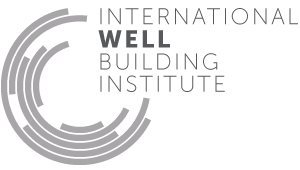- Air
- Air filtration
Air filtration
- 01 Air quality standards
- 02 Smoking ban
- 03 Ventilation effectiveness
- 04 VOC reduction
- 05 Air filtration
- 06 Microbe and mold control
- 07 Construction pollution management
- 08 Healthy entrance
- 09 Cleaning protocol
- 10 Pesticide management
- 11 Fundamental material safety
- 12 Moisture management
- 13 Air flush
- 14 Air infiltration management
- 15 Increased ventilation
- 16 Humidity control
- 17 Direct source ventilation
- 18 Air quality monitoring and feedback
- 19 Operable windows
- 20 Outdoor air systems
- 21 Displacement ventilation
- 22 Pest control
- 23 Advanced air purification
- 24 Combustion minimization
- 25 Toxic material reduction
- 26 Enhanced material safety
- 27 Antimicrobial activity for surfaces
- 28 Cleanable environment
- 29 Cleaning equipment
- P9 Advanced cleaning
05. Air filtration
To remove indoor and outdoor airborne contaminants through air filtration.
|
Post Date: 27 Apr, 2017 Status: Approved Projects registered as New and Existing Interiors that can demonstrate that aspects of the base building design is outside of their control are not required to achieve Feature 05, Part 1: Filter Accommodation. |
|
Post Date: 24 Oct, 2016 Status: Approved In a project with a split-system air conditioning unit that does not allow for accommodating MERV 13 filters, the following measures may be implemented as an alternative. For Parts 1 and 2a of this feature, a standalone air purifier with carbon filter and HEPA filter performing equivalent to MERV 17-20 may be used in accordance with manufacturer’s guidelines. Installation of the HEPA filters may not be conditional based on the criteria in Part 2b. A sufficient quantity of stand-alone air purifiers and carbon filters and HEPA filters must be provided in accordance with the manufacturers recommended area coverage. Provide a policy document to confirm Part 3 of this Feature, and a policy document that confirms that the project owner will maintain and replace the filters and filter units located within the project as per manufacturer specifications. |
|
Post Date: 24 Oct, 2016 Status: Approved Projects unable to provide additional space for carbon filters may instead educate future tenants on their ability to buy and install stand-alone air purifiers with carbon filters. The project team must provide a letter signed by the project owner to confirm that if required for WELL certification in the future, the project owner will buy and install the air purifiers with filters on behalf of the tenant. It must be demonstrated that adequate wall space is accommodated to install wall-mounted air purifiers. The WELL Assessor will confirm the available wall space and examine a copy of all the information given to tenants during the project’s Performance Verification. |
|
Post Date: 06 May, 2016 Status: Approved In lieu of installing rack space for future carbon filters, an execution plan for future modifications to the HVAC system to create rack space for carbon filters may be provided in the event that the installation of carbon filters is a requirement of the WELL Building Standard in the future. To follow this approach, it must be confirmed that the system would be able to physically accept carbon filters should the necessary rack space be created, the plan must identify the cost estimates of renovating the HVAC system to include the necessary rack space to confirm that it is considered a capital improvement item, and the owner must commit to making the upgrades should the WELL Building Standard require carbon filters in a future recertification of the project. |
|
Post Date: 06 May, 2016 Status: Approved Multifamily Residential projects may use wall-mounted HEPA filters to meet the requirements of Feature 5 Parts 1 and 2, provided the project contains a sufficient quantity of wall mounted HEPA filters in accordance with the manufacturer’s recommended area coverage. In addition, a policy document must be provided confirming Part 3 of the Feature and that the Owner will maintain the filters for the units that are located in both common and private areas. |
- 01 Air quality standards
- 02 Smoking ban
- 03 Ventilation effectiveness
- 04 VOC reduction
- 05 Air filtration
- 06 Microbe and mold control
- 07 Construction pollution management
- 08 Healthy entrance
- 09 Cleaning protocol
- 10 Pesticide management
- 11 Fundamental material safety
- 12 Moisture management
- 13 Air flush
- 14 Air infiltration management
- 15 Increased ventilation
- 16 Humidity control
- 17 Direct source ventilation
- 18 Air quality monitoring and feedback
- 19 Operable windows
- 20 Outdoor air systems
- 21 Displacement ventilation
- 22 Pest control
- 23 Advanced air purification
- 24 Combustion minimization
- 25 Toxic material reduction
- 26 Enhanced material safety
- 27 Antimicrobial activity for surfaces
- 28 Cleanable environment
- 29 Cleaning equipment
- P9 Advanced cleaning
